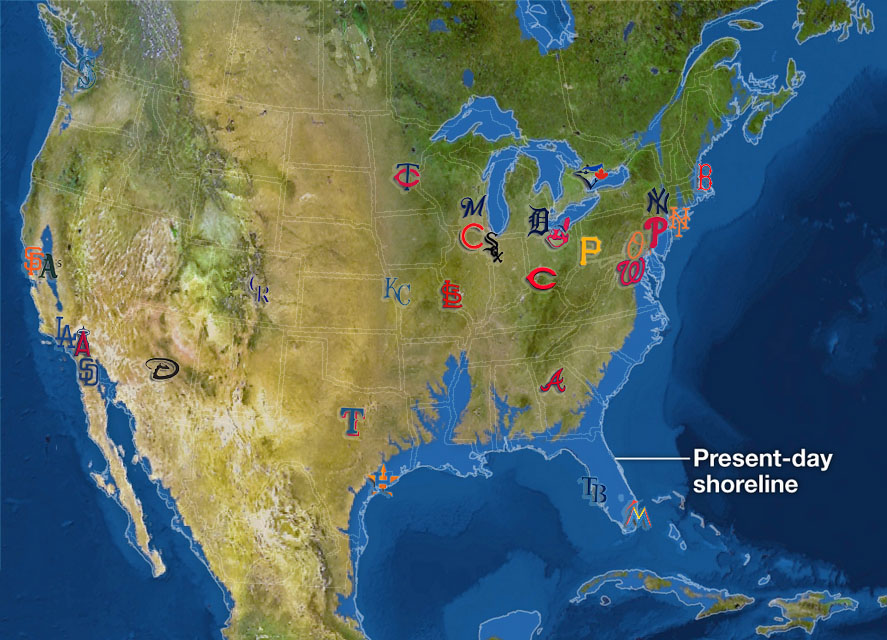

To give you an idea of how much impact even the 23 foot rise a melted Greenland ice sheet would have on our planet, believe it or not the Earth would actually rotate more slowly, with the length of the day becoming longer than it is today by about two milliseconds. If the Antarctic Ice Sheet completely melts, sea level would rise by about 60 meters (200 feet). If the Greenland Ice Sheet completely melts, scientists estimate that sea level would rise about 7 meters (23 feet). Even partial melting of this ice due to climate change will significantly contribute to sea level rise. Over 99% of all ice found on land is contained in the ice sheets covering Antarctic and Greenland. Image credit: NOAA – National Oceanic and Atmospheric Agency, Here’s an example of how much the polar ice in the Arctic has shrunk in the past 20 years. And as the air warms, and the sea ice and snow cover melt, the darker water and land that are now exposed absorb the sun’s rays, whereas the white snow cover and ice reflected the sun’s rays. So even though nobody up there has produced the emissions and pollution, those regions reap the “rewards”. It starts because the atmospheric currents caused by the rotation of the Earth, affecting our weather every day and which flow naturally towards the poles, transport our carbon emissions and other pollutants up to the polar regions, where they accumulate. Why? Because the warming of the Earth hits the Arctic and Antarctic earlier and harder than everywhere else, which then in return impacts the weather and sea levels around the world. The Earth’s poles are sometimes called the canary in the coal mine for climate change. We all know the polar ice is melting, and melting faster than one could have imagined.


 0 kommentar(er)
0 kommentar(er)
